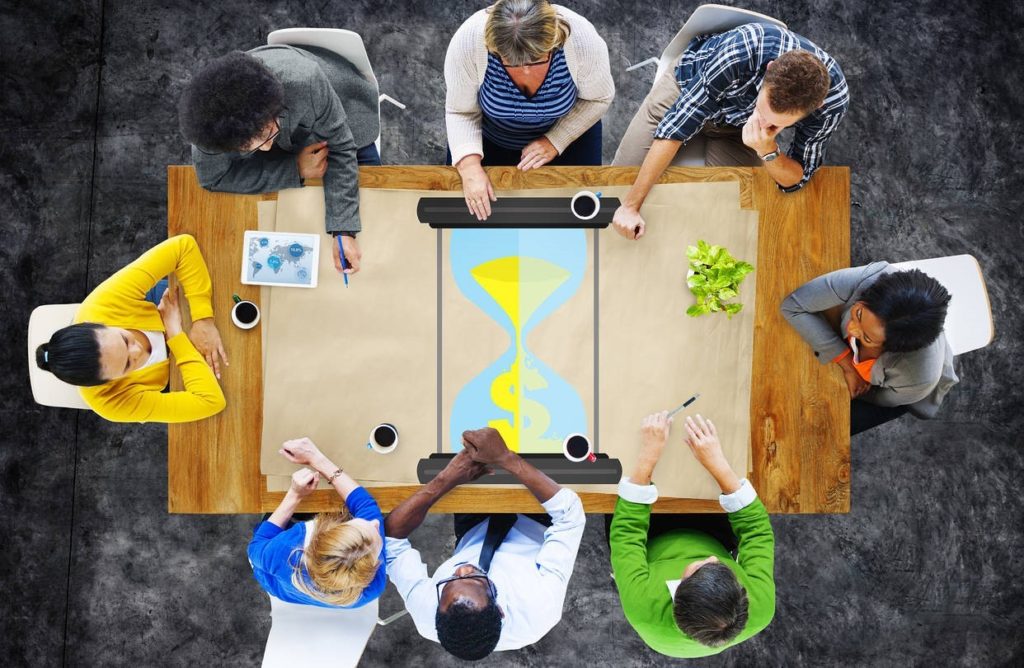In the history of business, there was never a single person that didn’t complain about meetings being boring, long and unproductive. As a matter of fact, the old school type of meeting has a negative influence on productivity, happiness, and creativity. Dare we say that meetings should be shorter, more productive, and even fun? Fortunately, many companies today are now paving the way for better management of meetings. In this post, we present to you our top five tips for a more productive meeting. Whether you are just a member of a team that wants to suggest something new or a manager trying to implement a new way of doing this, you will surely find a use for them.
Finish your meetings with actionable questions
Counter intuitively, our first tip is about something you do at the end of your meeting. This is to always ensure your meeting has an actionable outcome. The last few minutes of a meeting should be used to recapitulate everything that was said.
According to experts, it is favorable to finish the meeting with the following inquiries:
- What will our next steps be?
- Whose responsibility are they?
- How long is the time frame for their completion?
About 30 seconds per meeting participant will ensure that the whole staff has an answer to these three questions. This is one of the most efficient ways of ending a meeting. You will also precisely determine who has what responsibility and who is accountable to whom. After some time, be sure to send out a summary of the meeting with the particular action items you talked about at the end of the meeting. This will reaffirm the meeting’s outcome.
Meetings with multiple locations
When the meeting is held in the same place every time, people tend to fall into a “default” meeting mode. Just imagine doing the same exercise day after day. There might be some progress, especially in the beginning, but after some time, a plateau is reached. Although there are meetings where this “autopilot” isn’t bad – in update or routine meetings, for instance – when you want your team to work out a particularly hard issue, develop swift and imaginative solutions for a client emergency, or debate complex problems, you need individuals that think outside the box and lose their autopilot. Either move the meeting location from time to time or create “headquarters” – a location established specifically for complex action and planning. Going outside is great when you want to spark creativity, while offsite locations are perfect for sensitive dialogues.
Whiteboard productivity
Whiteboards have been around for a long time, serving as a place to regularly write notes and to help you stay productive and organized. Originally designed to be an erasable surface for keeping track of crucial information or taking notes, they have gone beyond just being a large board hanging on a wall. In an effort to improve their use and benefits, magnetic whiteboards in different sizes and styles were introduced. You can use them in almost any location as they’re able to increase productivity in a number of settings. Useful magnetic whiteboard is excellent for diagrams, helpful illustrations and also for notes.
Meetings should be shorter and planned only when needed
First off, setting a time limit of 10 to 15 minutes is really helpful. Some executives actually put on an alarm that will show when the meeting should end. No wonder that TED talks last for a maximum of 18 minutes. Any longer will only lower the attention span. Most businesses set a particular time for meetings. This also lowers productivity because of a pre-planned schedule. It is much more effective to have meetings planned for a specific purpose, whether it a decision or an action plan.
Add moving and getting around
According to research, only 10 minutes of moving are needed to increase concentration, while another one discovered that over 70% of employees report feeling more focused when they reduce their sitting time by at least an hour. Encourage your staff to get off their chairs and move during meetings, whether it is a brainstorm situation or only a recap. For example, you can augment your current conference room setup with height-adjustable furniture, so that it becomes common for a person to sit or stand at any time during a meeting.
Meetings don’t have to be excruciating – they can become a medium for change. Tips like these can increase productivity and improve integration and communication, as well as improving job satisfaction and engagement. Ultimately, better meetings equal a better workflow.

